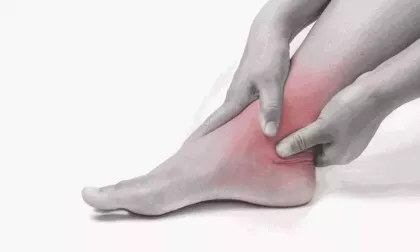How to Prevent a Sprained Ankle From Becoming a Chronic Instability

Regardless of how active you are, you need your legs for standing and moving around, and your feet for maintaining balance. Walking, running, dancing, jumping … all of these actions are only possible with functionally stable legs and feet. One of the most common conditions that affect balance and stability with your lower body is ankle sprains.
This is a problem very common with athletes, as indoor sports account for 7 out of 1,000 incidents of cumulative exposure to sprains. However, anyone can experience an ankle injury (two million people a year) for a number of reasons. Repeated injuries can lead to chronic instability in your ankle, and that can create regular problems with balance when performing basic tasks on your feet.
Residents of the Medford and Grants Pass, Oregon, areas looking for ways to treat ankle injuries or other orthopedic conditions can find help from our team of medical specialists at Southern Oregon Orthopedics.
We offer comprehensive diagnostic and treatment options for a wide variety of orthopedic problems, with customized care plans and on-site physical therapy to help you get back on your feet.
To prevent a sprain from becoming chronic, let’s examine how they happen, what contributes to them becoming chronic, and what you can do to prevent that from happening.
How an ankle sprain happens
Your ankle joint is made up of your ankle bone and your two lower leg bones (tibia and fibula), with ligaments to connect, support, and stabilize your joint, and muscles and tendons to help it move. A sprained ankle occurs when something happens to stretch or tear your ankle ligaments beyond their limits, often as the result of a fall or rolling or twisting your ankle from physical activity.
There are three types of ankle sprains, ranging from mild to severe, and all can come with varying degrees of pain, swelling, tenderness, and difficulty walking.
How a sprained ankle can become chronic
After you sprain your ankle, your proprioception (your body’s ability to sense movement and location), muscle strength, and reaction are compromised. This is normally the result of one of three ligaments being affected in the injury: your anterior talofibular (ATFL), calcaneofibular (CFL), or posterior talofibular (PTFL).
Repeated injuries with these ligaments or improper recovery from an existing injury are both common ways to increase your chances of chronic instability in your ankles. This can also result in chronic ankle pain and arthritis in your ankle joint.
Methods of prevention
There are some basic steps you can take to prevent dealing with chronic ankle problems:
Warm up
Something that is true for preparing for any physical activity, getting your body ready for exercise, work, or sports can make a big difference in how well you handle the experience. Warm up your legs and feet before doing anything too strenuous.
Exercise
Stability training and balance exercises can make a huge difference in maintaining your posture while walking, running, or doing most upright activities, and can help prevent injuries to your ankles.
Use caution
If you aren’t conditioned to be active in a specific sport or other physical activity, avoid it to prevent injury to your ankle or other parts of your body. Always be prepared before engaging in running, jumping, or other activities that may increase your chance of being injured. Be careful when walking or running on uneven surfaces as well.
Proper gear
Choose gear that is right for the activity you’re involved in, from proper fitting shoes designed for what you’re doing to braces or support tape to protect previous injuries. Minimize or avoid wearing high-heeled shoes whenever possible, as they can also contribute to ankle problems.
We often take walking and running for granted, but ankle injuries can lead to chronic problems if they’re not treated in a timely fashion. If you’re dealing with an ankle injury, make an appointment with the team at Southern Oregon Orthopedics to keep it from getting worse. Call our office most convenient to you or schedule online today.